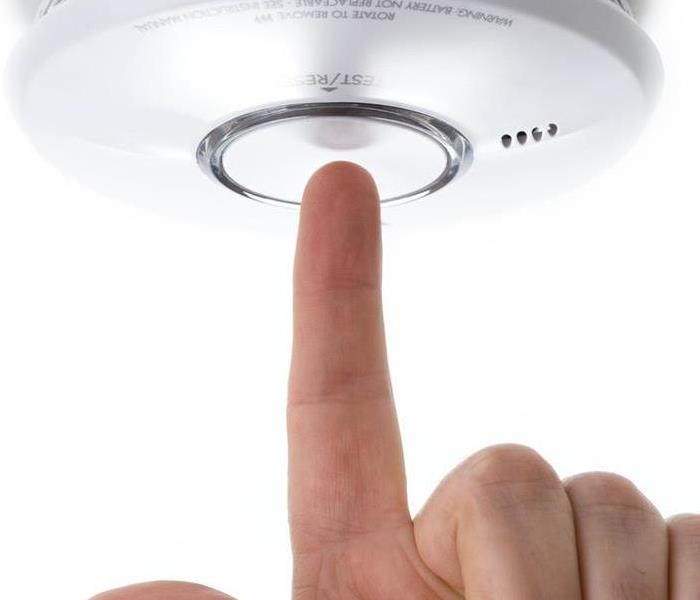Smoke Detector Facts
4/29/2019 (Permalink)
Smoke detectors are a vital first line of defense for you and your family. But, these devices need to be both installed and maintained correctly in order to provide you with adequate protection. In one quarter of the U.S. home fires in which smoke detectors failed, dead batteries were the cause, according to the National Fire Protection Association (NFPA).
By properly selecting, positioning and maintaining the smoke alarms in your house, you can have peace of mind that you’re taking an important step to help protect your family in case of a fire.
Features of Smoke Detectors
While different smoke detectors may look similar, there are important features that vary among models. First, how is it powered? Some alarms are powered by a battery, whereas others are hardwired into your house’s electrical system (and are typically equipped with a backup battery), the U.S. Fire Administration says.
All of the smoke alarms throughout your house should be interconnected through hard-wiring or a wireless signal, suggests Richard Roux, senior electrical specialist with the National Fire Protection Association (NFPA). “That means when one alarm sounds, they all do,” Roux says. New homes are required to include hardwired, interconnected smoke alarms with backup batteries, the American Red Cross says. If you don’t already have the wiring in your home, you can buy devices that interconnect wirelessly, but you may need to buy models from the same brand in order to ensure they can communicate, Consumer Reports says.
Remember, some models include a built-in carbon monoxide (CO) detector, which alerts you to dangerous levels of this deadly gas, Consumer Reports says. If your smoke alarm isn’t a dual model with a CO detector built in, you’ll want to also purchase a CO alarm and install it in your home. CO alarms should be installed outside all sleeping areas and on every level of the home, the Consumer Product Safety Commission says.
Also, what type of sensor does the smoke alarm use: ionization or photoelectric? While one type is better at detecting flaming fires, the other is better at detecting smoldering fires. “If a fire smolders with no flame, then a photoelectric sensor will detect it first,” Roux says. “If it is a hot, flaming fire, then an ionization sensor will likely sound first.” Many smoke alarm models are now dual-sensor, meaning they use both technologies. If you don’t have dual-sensor alarms, the NFPA recommends installing both ionization and photoelectric alarms in your home.
Should a fire disaster strike your home or business give SERVPRO of Salem/Peabody/Marblehead a call at 978.744.4545.






 24/7 Emergency Service
24/7 Emergency Service
